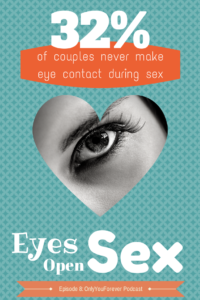
How Do I Know When My Marriage Is Beyond Repair?
Key Takeaways
- Dr. John Gottman’s research identifies four critical predictors of divorce: criticism, contempt, defensiveness, and stonewalling
- Safety must come first – marriages involving abuse cannot and should not be repaired until the abusive partner commits to change
- Many seemingly hopeless marriages can be saved through emotion-focused therapy when both partners show willingness to reconnect
- The presence of fundamental respect, shared values, and mutual commitment to growth often indicates a marriage worth saving
- Professional intervention through couples therapy significantly improves outcomes for distressed marriages when both partners participate
Asking yourself “how do I know when my marriage is beyond repair” represents one of the most painful moments in any relationship. When your marriage feels broken beyond repair, it’s natural to wonder if the damage can ever be undone. The constant fear that your entire relationship has reached an irretrievable breaking point can create an overwhelming emotional toll on your physical and mental health.
Yet here’s what decades of research in emotion-focused couples therapy reveals: not all marriages that feel beyond repair actually are. While some relationships face truly insurmountable challenges, many couples who believe their marriage is beyond saving can rebuild their emotional connection and create a healthy relationship through professional guidance and mutual commitment to the healing process.
Understanding the difference between a troubled marriage experiencing severe distress and one that’s genuinely beyond repair requires examining specific warning signs, recognizing when safety concerns must take priority, and knowing when hope for rebuilding remains possible.
Immediate Warning Signs Your Marriage May Be In Serious Danger
When couples find themselves feeling uncertain about their relationship’s future, certain warning signs indicate that immediate intervention is necessary. These symptoms don’t necessarily mean your marriage is beyond repair, but they signal that professional help is urgently needed to prevent further deterioration.
Complete emotional shutdown represents one of the most serious warning signs. When one partner or both partners feel absolutely nothing positive toward each other anymore, the emotional distance has reached a critical point. This goes beyond temporary disconnection during stressful periods—it’s a persistent state where spending time together feels forced and artificial.
Persistent contempt emerges through eye-rolling, name-calling, mocking behavior, and deliberate attempts to make your spouse feel inferior. Unlike healthy disagreements that focus on specific issues, contempt attacks your partner’s character and worth as a person. This toxic environment creates lasting damage to self-esteem and mutual respect.
Total communication breakdown lasting months or years without any genuine attempts at resolution indicates that both partners have essentially given up on genuine communication. When conversations only involve logistics about daily life or escalate immediately into harmful behaviors, the foundation for rebuilding trust becomes severely compromised.
Repeated betrayals involving infidelity, financial deception, or other major violations of trust—especially when accompanied by no genuine remorse or commitment to change—create a pattern that becomes increasingly difficult to overcome. The repeated betrayals destroy the safety necessary for emotional intimacy to survive.
Active avoidance of each other and complete refusal to discuss relationship issues may indicate that one or both partners have emotionally checked out. When couples live separate lives under the same roof and actively avoid quality time together, they’re functioning more like hostile roommates than married partners.
Spouse refuses all forms of marriage counseling or professional intervention, demonstrating an unwillingness to acknowledge problems or work toward solutions. When one partner categorically rejects the possibility of change or growth, the prognosis becomes much more challenging.
The Four Horsemen: Gottman’s Predictors of Divorce
Dr. John Gottman’s groundbreaking research spanning over four decades has identified four communication patterns that predict divorce with remarkable accuracy. These “Four Horsemen” represent toxic patterns that gradually erode the foundation of even previously strong marriages. Understanding these patterns helps distinguish between relationships experiencing temporary distress and those facing more serious threats.
Criticism vs. Complaints
Healthy marriages involve addressing problems through specific complaints that focus on particular behaviors or situations. Destructive criticism, however, attacks your partner’s character rather than addressing the underlying issues causing conflict.
Constructive complaint: “I felt hurt when you forgot our anniversary dinner because it’s important to me that we celebrate our milestones together.”
Destructive criticism: “You never remember anything important because you’re completely selfish and don’t care about anyone but yourself.”
Notice how criticism uses absolute language like “always” and “never” while attacking character traits rather than specific actions. This pattern gradually erodes your spouse’s self-esteem and creates defensive reactions that prevent meaningful problem-solving.
Contempt: The Most Dangerous Horseman
Among the Four Horsemen, contempt stands as the strongest predictor of divorce when left untreated. Contempt involves deliberate attempts to make your partner feel inferior through expressions of disgust, superiority, and emotional cruelty.
Common contempt behaviors include:
- Eye-rolling during conversations
- Name-calling and verbal insults
- Mocking your partner’s concerns or feelings
- Sarcastic responses designed to hurt
- Acting morally superior or talking down to your spouse
Contempt destroys the emotional safety required for vulnerable communication and creates a toxic environment where emotional support becomes impossible. When contempt becomes a regular pattern, it signals that the fundamental respect necessary for a healthy marriage has been severely damaged.
Defensiveness and Stonewalling
Defensiveness occurs when partners respond to legitimate concerns by playing the victim, making excuses, or counter-attacking rather than taking responsibility for their actions. While occasional defensive reactions are normal, chronic defensiveness prevents couples from resolving conflicts constructively.
Stonewalling involves completely shutting down emotionally during conversations, often accompanied by physical withdrawal like leaving the room or refusing to respond. Men tend to stonewall more frequently than women, often as a response to feeling emotionally overwhelmed or criticized.
Both defensiveness and stonewalling prevent the honest communication necessary for addressing deeper issues in the relationship. When these patterns become entrenched, couples find themselves stuck in negative cycles where every attempt at connection leads to greater emotional distance.
When Safety Must Come First: Marriages Involving Abuse
Any marriage involving abuse cannot and should not be repaired until safety is established and the abusive partner demonstrates sustained commitment to change. This represents an absolute boundary where the question of whether the marriage is beyond repair becomes secondary to protecting the victim’s well being.
Physical violence of any kind—hitting, pushing, blocking, throwing objects, or any form of physical intimidation—creates an environment where genuine therapeutic work becomes impossible. The constant fear generated by domestic violence prevents the emotional vulnerability required for healing and rebuilding trust.
Emotional abuse through threats, intimidation, extreme control tactics, isolation from family members, financial abuse, or persistent verbal attacks creates equally harmful psychological damage. Victims of emotional abuse often struggle to recognize the severity of their situation because the abuse may be intermittent or justified by the abuser as “loving” or “caring.”
Critical safety considerations:
The abused partner cannot work on marriage issues while living in constant fear or under coercive control. Professional safety planning and often separation are necessary before any repair attempts can begin. Marriage counseling is actually contraindicated when active abuse is present, as it can escalate danger for the victim.
In these cases, the abusive partner must demonstrate sustained commitment to change through individual therapy specifically addressing abusive behaviors, accountability groups, and consistent behavior modification over an extended period—typically measured in years, not months. Only after these safeguards are in place and the abusive partner is showing sustained commitment to reform over time would it be reasonable to consider engaging in couple’s therapy.
Victims should contact the National Domestic Violence Hotline at 1-800-799-7233 for confidential support, safety planning, and resources. Local domestic violence organizations can provide legal guidance, emergency housing, and specialized counseling services designed for abuse survivors.
Important note: Again, couples therapy should never be attempted while abuse is ongoing. Individual therapy for both partners, with specialized treatment for the abuser, must occur first. Only after sustained safety and genuine accountability can any form of relationship work be considered.
Signs Your Marriage Can Still Be Saved
While recognizing warning signs is crucial, understanding when hope remains possible can prevent couples from giving up prematurely on relationships that could be restored. Even marriages experiencing severe distress often retain certain qualities that indicate the relationship feels salvageable with proper professional guidance and mutual commitment.
Presence of Underlying Love and Respect
Despite current struggles, you can still identify positive qualities in your partner and genuinely care about their well being. This fundamental respect creates the foundation necessary for rebuilding emotional intimacy, even when ongoing conflict has created significant emotional distance.
Arguments focus primarily on specific issues rather than attacking each other’s character or worth as human beings. While disagreements may be intense, they don’t involve the destructive contempt that makes healing nearly impossible.
Moments of tenderness and genuine connection still occur, even if infrequently. These glimpses of your former bond indicate that the emotional connection isn’t completely severed, providing hope that negative cycles can be interrupted and replaced with positive interactions.
Shared Values and Life Vision
Core beliefs about family, integrity, financial responsibility, and major life priorities remain fundamentally aligned. While you may disagree about methods or timing, you share similar visions for your future together and want the same things from life.
Both partners genuinely want the marriage to succeed and express willingness to work toward solutions. This mutual commitment to the relationship, even during difficult periods, provides the motivation necessary for sustained effort in therapy.
Your disagreements stem primarily from external stress, poor communication patterns, or unresolved past hurts rather than fundamental incompatibility in values or life goals. This suggests that learning better ways to resolve conflicts and address underlying issues could restore harmony.
Willingness to Be Vulnerable
Both partners can acknowledge their role in current relationship problems without becoming completely defensive. This self awareness and ability to accept feedback creates the foundation for meaningful change and growth. In reality, this attribute is often missing during conflict and may only begin to reemerge after several sessions of couple’s therapy with a properly trained marriage therapist.
What might this look like? Despite feeling hurt or angry, you maintain openness to understanding your spouse’s perspective and genuine curiosity about their experience. This emotional flexibility indicates that empathy and emotional support can be restored.
As well, you recognize that change is necessary (even for yourself) and feel hopeful that positive transformation is possible with proper effort and guidance. When both partners share this mindset, even deeply entrenched patterns can often be modified through focused therapeutic work.
The Emotion-Focused Therapy Perspective on Hope
Emotion-Focused Therapy offers tremendous hope for couples wondering if their marriage is beyond repair. Developed by Dr. Sue Johnson, EFT approaches relationship distress through the lens of attachment theory, recognizing that most relationship problems stem from attachment fears and unmet emotional needs rather than fundamental incompatibility.
Remarkable success rates demonstrate EFT’s effectiveness: research shows that 70-73% of couples move from distress to recovery through EFT, while 90% show significant improvement when both partners engage fully in the therapeutic process. These outcomes include couples who initially believed their marriages were beyond saving.
Understanding negative cycles forms the foundation of EFT work. Most distressed couples become trapped in predictable patterns where one partner’s attempt to connect triggers the other’s defensive withdrawal, creating escalating emotional distance. EFT helps couples identify these negative cycles and understand how attachment fears drive seemingly irrational behaviors.
Accessing underlying emotions beneath anger, criticism, and withdrawal reveals the deeper longings for emotional connection that motivate most relationship conflicts. When couples learn to express their attachment needs—desires for comfort, security, and emotional responsiveness—they often discover that they want the same things from their relationship.
Creating new positive cycles becomes possible when couples feel safe enough to express vulnerability and respond to each other’s emotional needs. EFT guides couples through carefully structured conversations that allow them to experience their partner as emotionally available and responsive, gradually rebuilding the emotional bond.
The EFT approach recognizes that even marriages experiencing severe distress often retain the potential for transformation when both partners feel safe enough to engage authentically. This perspective offers hope to couples who might otherwise conclude their relationship has reached an irreparable state.
When External Stressors Are the Primary Culprit
Many marriages that feel beyond repair are actually healthy relationships under extraordinary stress. Distinguishing between temporary crisis and fundamental relationship problems can prevent couples from abandoning salvageable marriages during challenging periods.
Financial hardship, job loss, or major life transitions can create overwhelming pressure that temporarily disrupts even strong relationships. When couples face foreclosure, unemployment, business failure, or other economic crises, the stress often manifests as relationship conflict even though the marriage itself remains fundamentally sound.
Health issues, caring for aging parents, or family crises requiring significant time and emotional energy can exhaust couples’ capacity for maintaining their emotional connection. Busy schedules, medical appointments, and caregiving responsibilities can make spending quality time together nearly impossible, creating emotional distance that feels alarming but is actually circumstantial.
Key indicators that stress is the primary problem:
The relationship was strong and satisfying before external pressures mounted. Couples can identify specific events or circumstances that preceded their current difficulties, and both partners recognize these external factors as contributing to their problems.
Both partners understand that stress is the enemy rather than each other. Instead of blaming their spouse for relationship problems, they recognize that external circumstances have created temporary strain on their normally healthy relationship.
Willingness to work together to address external challenges while protecting the relationship demonstrates that the fundamental partnership remains intact. Couples may need temporary support managing stressors while maintaining their commitment to each other.
When external stress is the primary culprit, couples often benefit tremendously from relatively brief therapeutic intervention focused on stress management, communication skills, and maintaining connection during difficult periods.
Getting Professional Help: When and How
Recognizing when and how to seek professional couples therapy can make the difference between a marriage that recovers and one that deteriorates beyond repair. Understanding different therapeutic approaches and knowing what to expect can help couples make informed decisions about their treatment options.
Individual Therapy First In Some Cases
Certain situations require individual therapeutic work before couples therapy can be effective. When active addictions are present, the addicted partner must demonstrate sustained commitment to recovery before meaningful relationship work can occur. Addiction creates unpredictability and broken trust that undermines the safety necessary for vulnerable communication.
Ending extra-marital affairs and healing from infidelity often requires individual work for both partners before couples therapy begins. The unfaithful partner needs individual support to understand their motivations and develop the empathy necessary for genuine remorse, while the betrayed partner may need individual help processing trauma and determining their own needs.
Personal mental health issues like untreated depression, anxiety, or trauma can significantly impact relationship dynamics. Addressing these individual concerns often improves each partner’s capacity for emotional regulation and empathy, creating better conditions for successful couples work.
How Emotion-Focused Therapy for Couples Can Help
EFT provides a structured, research-based approach to healing distressed marriages through focused work on emotional connection and attachment bonds. The therapy progresses through specific stages designed to interrupt negative cycles and create new positive patterns of interaction.
Identifying the negative cycle helps couples understand how their individual attachment fears create predictable patterns of conflict and disconnection. Rather than blaming each other, couples learn to see the cycle itself as the problem that needs to be addressed.
Learning about softer, underlying emotions allows partners to move beyond surface-level anger and criticism to express the deeper fears and longings that drive their behavior. This emotional accessibility creates opportunities for genuine empathy and understanding.
Restructuring to a positive cycle occurs when couples learn to express their attachment needs clearly and respond to each other with comfort and reassurance. These new interactions gradually rebuild trust and emotional intimacy, creating a secure bond that can withstand future challenges.
Learning about attachment longings helps couples understand that their conflicts often stem from fundamental human needs for security, comfort, and emotional responsiveness. When these needs are met within the relationship, many other problems become much more manageable.
To learn more about this approach to couple’s therapy, we invite you to check out our couples counseling page and book a free 20 minute consultation call today.
Signs Therapy Is Working
Increased emotional safety becomes evident when both partners feel more comfortable expressing vulnerability without fear of attack or rejection. Conversations that previously led to conflict begin producing understanding and connection.
New positive interactions start occurring spontaneously as couples apply skills learned in therapy to their daily lives. These moments of genuine connection provide hope and motivation to continue the therapeutic work.
Better understanding of each other’s underlying needs and fears creates empathy that transforms how couples interpret their partner’s behavior. Actions that previously seemed selfish or uncaring are understood as attempts to meet legitimate emotional needs.
Gradual decrease in the frequency and intensity of negative cycles indicates that new patterns are becoming established. While occasional setbacks are normal, the overall trajectory moves toward greater connection and understanding.
Frequently Asked Questions
How long should we try to save our marriage before giving up?
There’s no universal timeline, but most marriage counselors recommend at least 6-12 months of genuine effort in therapy (with weekly sessions) before making final decisions about ending the relationship. This timeline assumes both partners are actively participating. The gradual process of rebuilding emotional intimacy and resolving unresolved issues often requires sustained effort over an extended period, particularly when the relationship has been distressed for years.
Can a marriage survive if only one person wants to work on it?
While it is less ideal if only one person is attending therapy, if that person does something different and shifts how they approach their relationship is will inevitably compel the other partner to shift as well. There are natural forces of equilibrium that can resist this (known as “homeostasis”), but a marriage can often be influenced by one party getting help. Of course, it is always more helpful if both are willing to engage with a couple’s therapist.
Is it normal to feel hopeless about marriage problems even if they might be fixable?
Yes, feeling overwhelmed and hopeless is extremely common in distressed marriages, even when the underlying issues are actually addressable through proper intervention. These intense feelings often reflect emotional flooding and the accumulated emotional toll of ongoing conflict rather than the actual viability of the relationship. Past hurts, unresolved conflicts, and current relationship stress can create a sense of despair that doesn’t necessarily reflect the marriage’s true potential for healing. Professional assessment can help distinguish between temporary emotional overwhelm and genuine incompatibility.
What if we’ve tried other therapists but nothing seems to work?
Different therapeutic approaches work better for different couples, and sometimes the issue is the approach rather than the couple. If previous therapy focused primarily on communication skills or behavior modification, consider trying evidence-based approaches specifically designed for couples, such as Emotion-Focused Therapy. Also, keep in mind that any therapist can self-identify as a couples therapist, but only those with post-graduate training and supervision in emperically-validated approaches can be depended on for reliable results. At Therapevo, we require our couples therapists to have this training before they can claim to be a couples therapist.
How do we know if we’re staying together for the wrong reasons?
Staying in an unhappy marriage solely due to fear of change, financial concerns, child custody worries, or social pressure—without genuine care and commitment to the relationship itself—often prolongs suffering for everyone involved, including family members. Healthy reasons for working on a troubled marriage include underlying love and respect, shared values, commitment to personal growth, and belief in the relationship’s potential for positive transformation. If you find yourselves living separate lives, feeling like strangers, or experiencing other forms of chronic disconnection without any mutual investment in change, it may be time to seek professional help for rebuilding your relationship.
Podcast: Play in new window | Download

Thanks for listening!
If you found this episode helpful, don’t forget to subscribe, leave a review, and share it with someone who might benefit.
Let’s keep the conversation going—because growth starts here!
Need Support Now?
Talk to Someone Today









